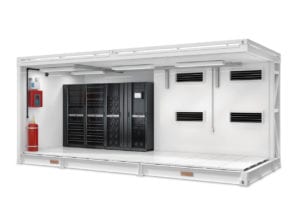Why Colocation Providers Are Adopting Prefab Modular Data Centers to Boost Resilience and Lower Risks
As colocation and hyperscale data center operators strive to grow their business in the highly competitive data center services marketplace, both systems resilience and time-to-market have emerged as important business differentiators. For these reasons, many colocation businesses are embracing innovative technologies, such as a prefabricated modular data center, to better service customer requirements for quick deployment and application stability. Modular data centers combine traditional power, cooling, and IT data center infrastructure into modules that are built off-site in a factory environment. These modules are delivered to the site and connected together to provide a cohesive data center solution. Each solution is pre-engineered and integrated with the latest controls and management software to ensure the solution operates as a system. With hardware and software components preassembled, integrated, and tested in a factory environment, deployment timeframes are shortened, and predictability of cost and performance is improved.

In the past five years, customers’ perceptions of modular infrastructure have moved from uncertainty to acceptance. Colocation providers often promote their use of modular solutions as a differentiator in terms of scalability, quality and reliability. This approach has been proven over time as both colocation providers and end customers have realized cost savings. In addition, modular data centers address the growing demand for eco-friendly construction of data centers.
Modular Data Centers: Improving Speed, Standardization, and Reliability
Those colocation providers who deploy modular data centers accrue benefits in multiple ways:
- Improved resilience – Resilience of operations has now moved beyond just the ability to recover from unanticipated downtime events like power outages with minimal physical and economic damage. Elements of systems reliability and sustainability of operations contribute to overall colocation provider resiliency. As such, emphasis is now placed on more predictable performance of assets and on higher energy efficiency in order to achieve a lower carbon footprint. These are common attributes of modular data centers.
Traditional data centers are assembled at colocation sites and the various parts and pieces are provided by multiple vendors – all of which need to perform their duties under time pressure in a particular sequence. This intensifies the need for coordination and increases the possibility of human error in both the design and construction phases. In the case of modular data centers, both performance and efficiency are more predictable because standardized components are pre-wired and are factory tested before shipment to the colocation site. Energy consumption and power usage effectiveness (PUE) are also determined prior to installation. Although the modular concept alone does not guarantee a lower PUE, the final solution is much more likely to achieve the designed PUE and cost targets because of reduced on-site construction complexity and fewer change orders. These factory-built modules help to improve resiliency since failure within one particular module does not cause the entire colo facility to fail. The pre-engineered design of the modules allows for better integration of power and cooling system controls thereby generating higher energy efficiency and greater cost savings.
- Workforce optimization – Adopting a prefabricated modular approach moves much of the on-site construction and integration off-site to the factory. This greatly simplifies the coordination and planning on site and allows colocation facilities to focus more manpower resources to critical business functions, such as demand planning and operations versus construction management. For example, the site preparation at the colocation provider facility can occur in parallel with equipment installation, connection, integration and testing in the factory, allowing for significant portions of project deployment time saved. When compared to traditional approaches, utilizing subsystems that have already been pre-designed and integrated can save up to 50% of the design/engineering time. The prefab module vendor absorbs the design process for the colo provider, using repeatable processes. As a result, human labor costs are reduced, and colocation staff is less stressed trying to meet aggressive customer deployment deadlines. The prefabricated module approach also simplifies staff training since the modules use a standard system-level interface. This lowers the possibility of human error when data center operation staff transitions occur.
- Risk mitigation – For many colocation providers, planning for growth and customer deployment deadlines is traditionally complex and difficult. The risk of overbuilding is always prevalent as investments in up-front CapEx are inflated in order to avoid capacity shortfalls when future demand spikes. When deploying modular data centers, no such tradeoff is required. Plans for future expansion are easily adjusted with modular designs that are both repeatable and flexible. The pre-designed and pre-built modules eliminate traditional speed-to-build bottlenecks and account for conformance to code standards and for UL inspection prior to being shipped to the site. The flexibility of scaling and rightsizing helps to minimize overspending when trying to accommodate both unpredictable demand and aggressive deployment deadlines.

Example of a Prefabricated Modular Data Center
Competitive Advantage with Higher Resiliency and Faster Time-to-Market
New economic realities make it challenging to bear the brunt of heavy upfront costs and extended construction times involved when engineering traditional data center expansions. The availability of pre-engineered, data center modules allows the planning cycle to switch from an onsite construction focus to onsite integration of pre-manufactured, pre-tested blocks of power and cooling. This results in quicker deployment, reduced space, higher reliability and greater predictability and flexibility, for roughly the same overall capital investment.
Access Modular Data Center White Paper
To learn more about how colocation providers and hyperscalers can improve the resiliency and time-to-market of their data center facilities, download White Paper 166: Practical Considerations for Implementing Prefabricated Data Centers.
The post Why Colocation Providers Are Adopting Prefab Modular Data Centers to Boost Resilience and Lower Risks appeared first on Schneider Electric Blog.